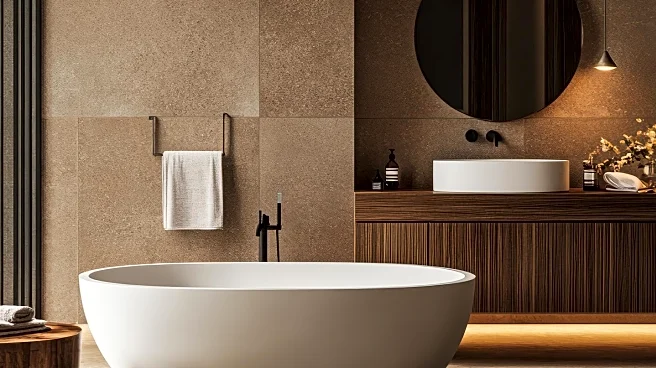What's Happening?
A modern family home in Herzliya, designed by architect Amir Zoref, showcases a blend of modernism and Japanese tradition. The 600-square-meter house, built on a one-dunam lot, features a minimalist design with
clean lines and a focus on harmony between architecture and art. The home includes large glass doors that open to a pool terrace, a green wall, mature oak trees, and a sunken firepit area. The interior design emphasizes natural materials such as concrete, mineral plaster, oak, stone, glass, and metal, with neutral tones providing a backdrop for furniture and art. The house also includes a basketball court, a home cinema, and a bar, reflecting the homeowner's lifestyle and preferences.
Why It's Important?
This architectural project highlights the growing trend of integrating modern design with natural elements in residential spaces. The emphasis on harmony and balance in design reflects a shift towards creating living spaces that are not only functional but also aesthetically pleasing and environmentally conscious. The use of natural materials and the incorporation of outdoor elements like a pool terrace and green wall demonstrate a commitment to sustainable living. This approach can influence future residential projects, encouraging architects and homeowners to prioritize eco-friendly and harmonious designs.
What's Next?
The innovative design of this Herzliya home may inspire other architects and developers to adopt similar approaches in their projects. As the demand for sustainable and aesthetically pleasing residential spaces grows, more homes may incorporate features like green walls, natural materials, and open floor plans that blur the line between indoor and outdoor living. This trend could lead to a broader acceptance of environmentally conscious design practices in the real estate industry.
Beyond the Headlines
The design of this home also raises questions about the role of architecture in enhancing quality of life. By creating spaces that are both functional and beautiful, architects can contribute to the well-being of residents. The integration of art and architecture in this project suggests a future where homes are not just places to live but also spaces that inspire and nurture creativity and personal expression.











